June 8, 2010
20th Century American Realism was a turn of the century art movement reflecting what was going on in the world. Many images were more urban, to represent the population shift.
Sources: http://en.wikipedia.org/wiki/American_realism#America_at_the_turn_of_the_century
Diego Rivera’s mural “Detroit Industry”

Posted In : Art Period
June 8, 2010
Pop Art (1960‘s) was art of the “popular” culture. It was during an era of mass production, expanding commercialism, and materialism. It began in England. In America, it was representative of real life, mocking the commercialism of the year. In England, images of American culture were juxtaposed with the intent to parody or mock through contrast.
Andy Warhol’s “Four Colored Campbell Soup Cans”
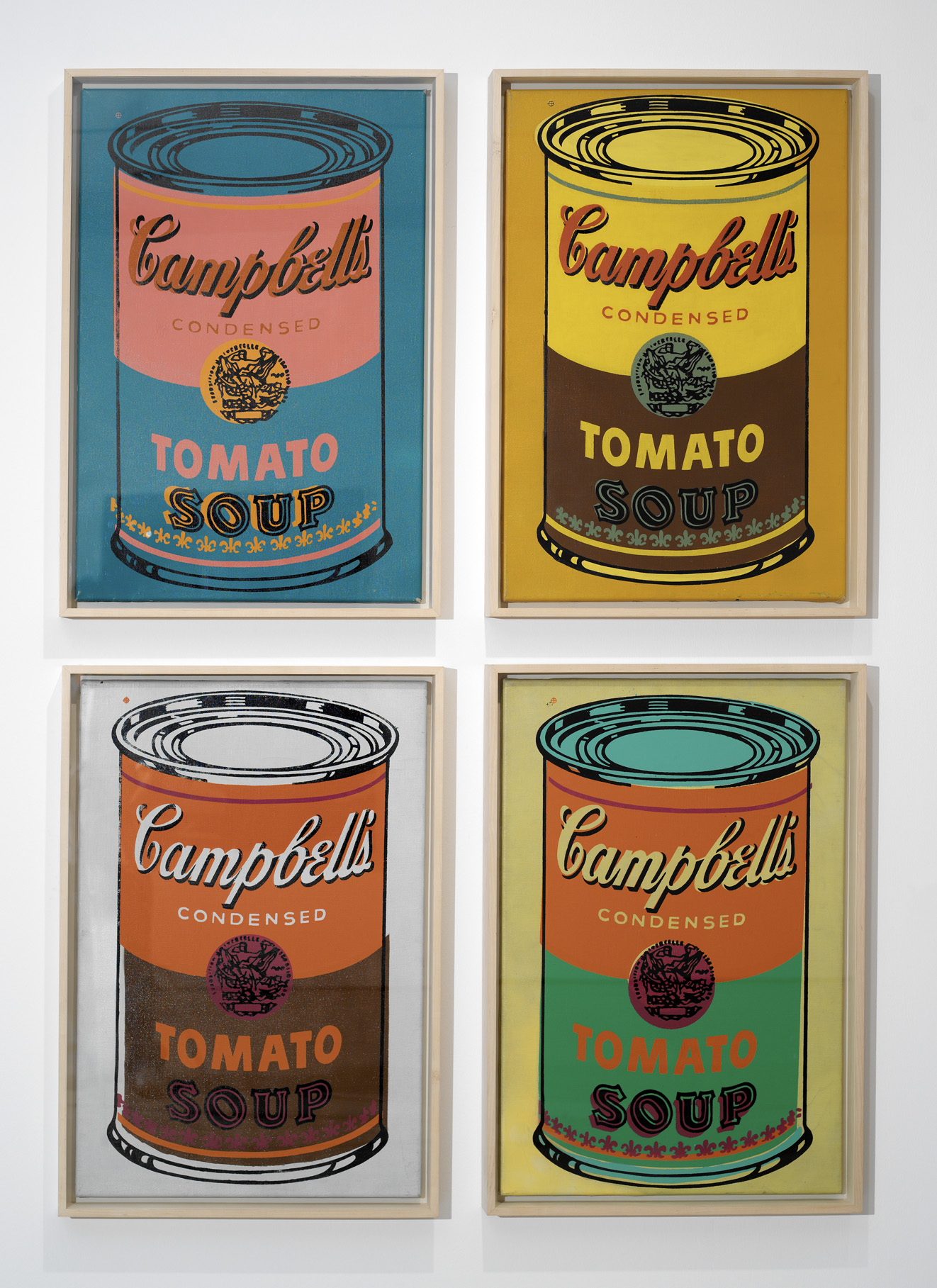
Posted In : Art Period
June 8, 2010
Abstract Expressionism was big in the 1940’s. Subject matter was usually non-representational as artists created with the intent to show an emotion. Not all of it is any of these though. Abstract Expressionism was as much about how artists applied paint as what the finished result was. They painted quickly in an effort to release their unconscious minds. A lot of it looks like it relied on chance or accident.
Sources: http://www.artlex.com/ArtLex/a/abstractexpr.html
Jackson Pollock’s “Number 8” 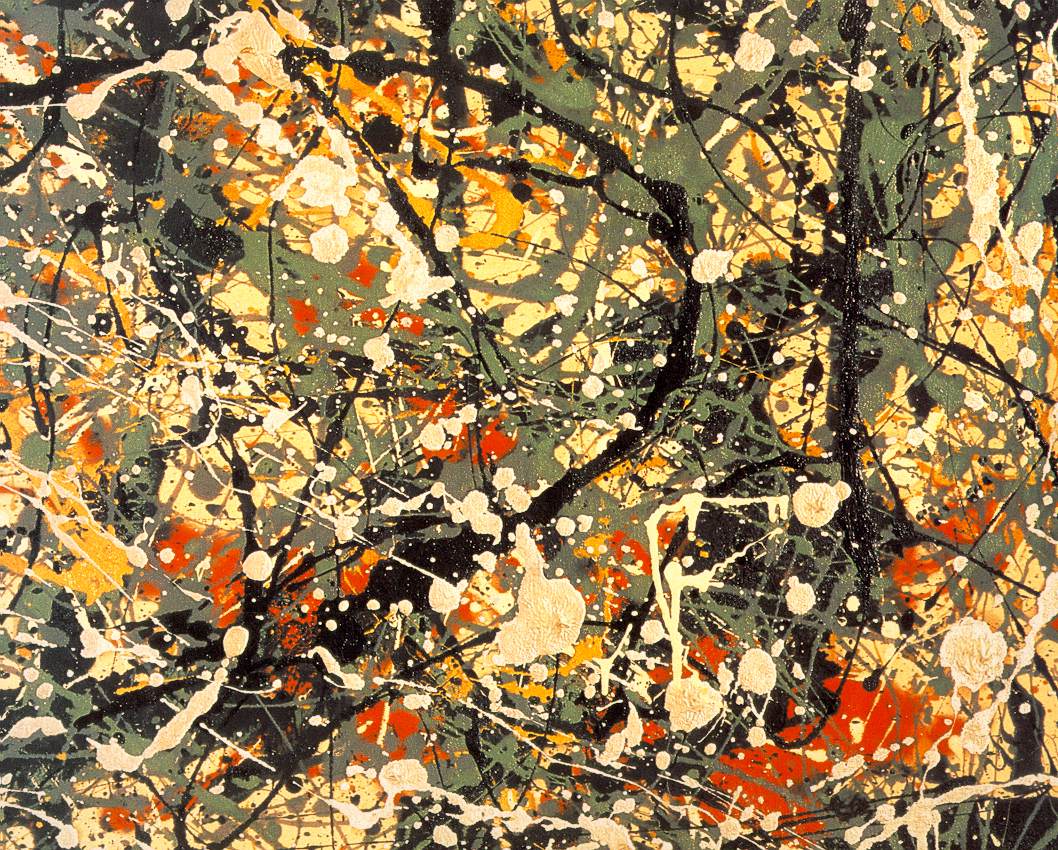
Posted In : Art Period
June 8, 2010
Surrealism (1924-1930‘s) was an extension of the Dadaist movement. Freud and his psychoanalysis were a huge inspiration and influence. Surrealists wants to paint the impossible, the dream worlds, and the unconscious mind.
Rene Magritte’s “Time Transfixed”
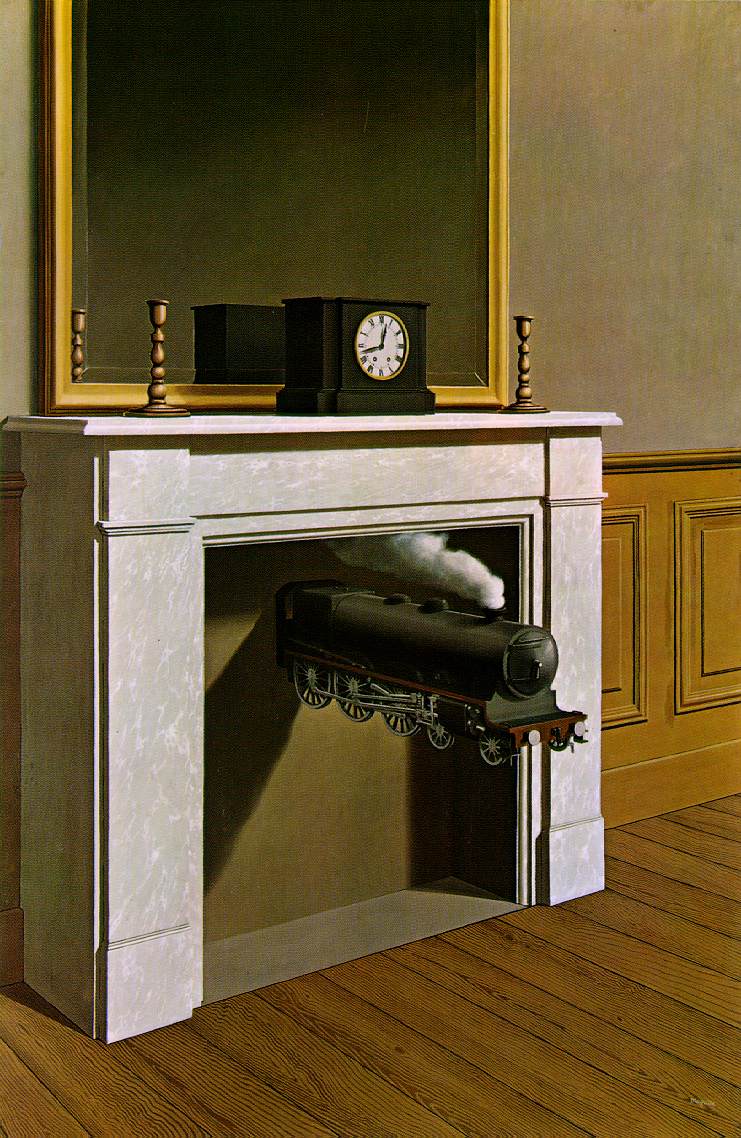
Posted In : Art Period
June 6, 2010
Dadaism (1916-1922) arose out of anti-war sentiment. It began in Zurich, Switzerland and was “art for art’s sake.” The artists who started the movement picked a random nonsense word from the dictionary (dada is French for “hobby horse,“ a child‘s word for dad in English, and “yes yes“ in Russian). The artists were disillusioned with modern society and rejected traditions and rules of art. It was a commentary on the crazy world; the world had lost it’s mind, so art would lose it’s mind. It eventually became anti-art as well.
There are no defining characteristics of Dadaism. Collage was big and DuChamp, the most famous of the Dadaists, created ready-mades- objects already created that he changed just a little bit. Photograms were created.
"Untitled" photogram by Man Ray
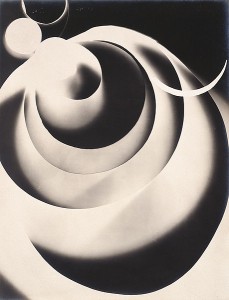
Hannah Hoch's "Dada Dance" (collage/photomontage)
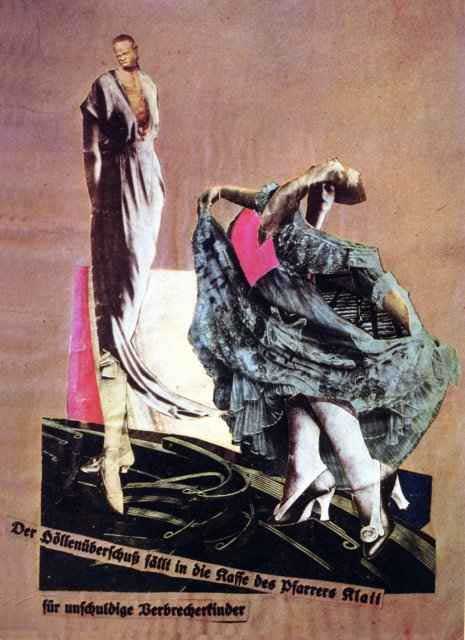
DuChamp’s "L.H.O.O.Q." (ready-made)
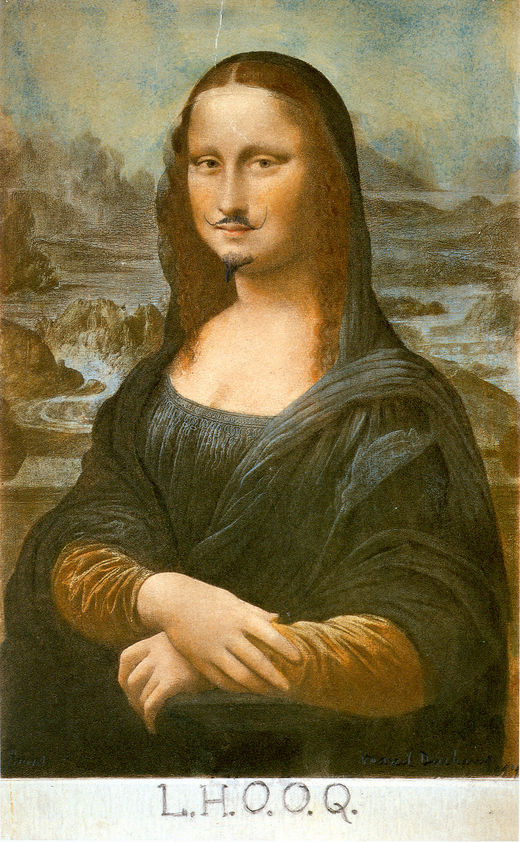
Posted In : Art Period
June 6, 2010
Abstraction (1908-1920‘s) began at the same time as cubism. In it, artists basically did whatever they wanted. Most pieces were non-representational, finding some other way to convey an emotion or message. Abstract art still persists today.
America began taking over the art scene in about 1900.
Kandinsky’s “Composition VI”
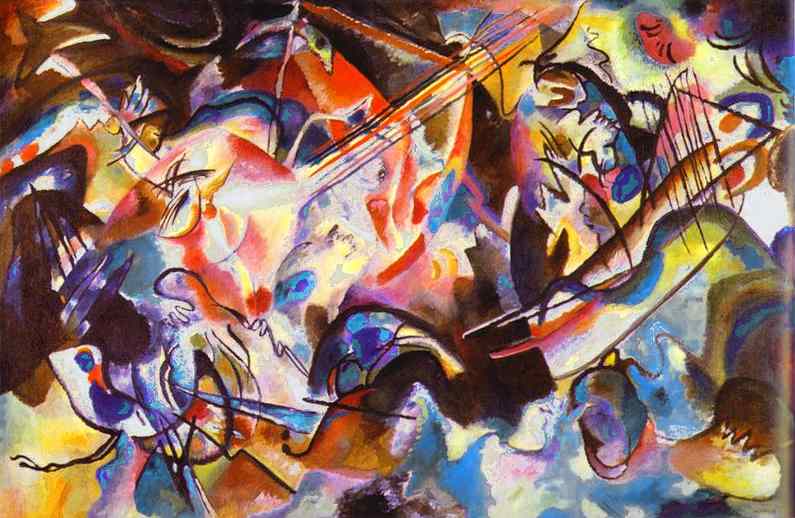
Posted In : Art Period
June 6, 2010

Picasso's "Still Life With Chain Caning"
Cubism (1908-1914) was a radical new direction for art. It was pioneered by Picasso and Braque and used geometric shapes. Cubism was divided into two main movements, analytic and synthetic cubism.
Analytic cubism was the first phase (Picasso's "Girl With Mandolin" shown below). Artists deconstructed reality, breaking up figures into shapes and looked at things from multiple perspectives. A face, for example, would be show in profile and from a ¾ view. Most of these works were monochromatic or near it, depending on values to show forms and separate shapes.
Synthetic cubism synthesized different things. (Picasso's "Still Life with Chain Caning" shown above) It had more color and less values, flattening things. There were more shapes than forms. There was collage work in synthetic cubism, and the synthesizing of different textures and materials was a big part of this part of the movement.
Orphic cubism, or orphism, is the second main phase of cubism, according to arthistory.net (they consider analytic and synthetic the same phase). Wikipedia considers it another art movement entirely. I am inclined to consider it a different art movement. Orphism was more abstract with brighter colors and many works produced had few or no geometric shapes or forms, a main characteristic of cubism.
Picasso’s “Girl with Mandolin”
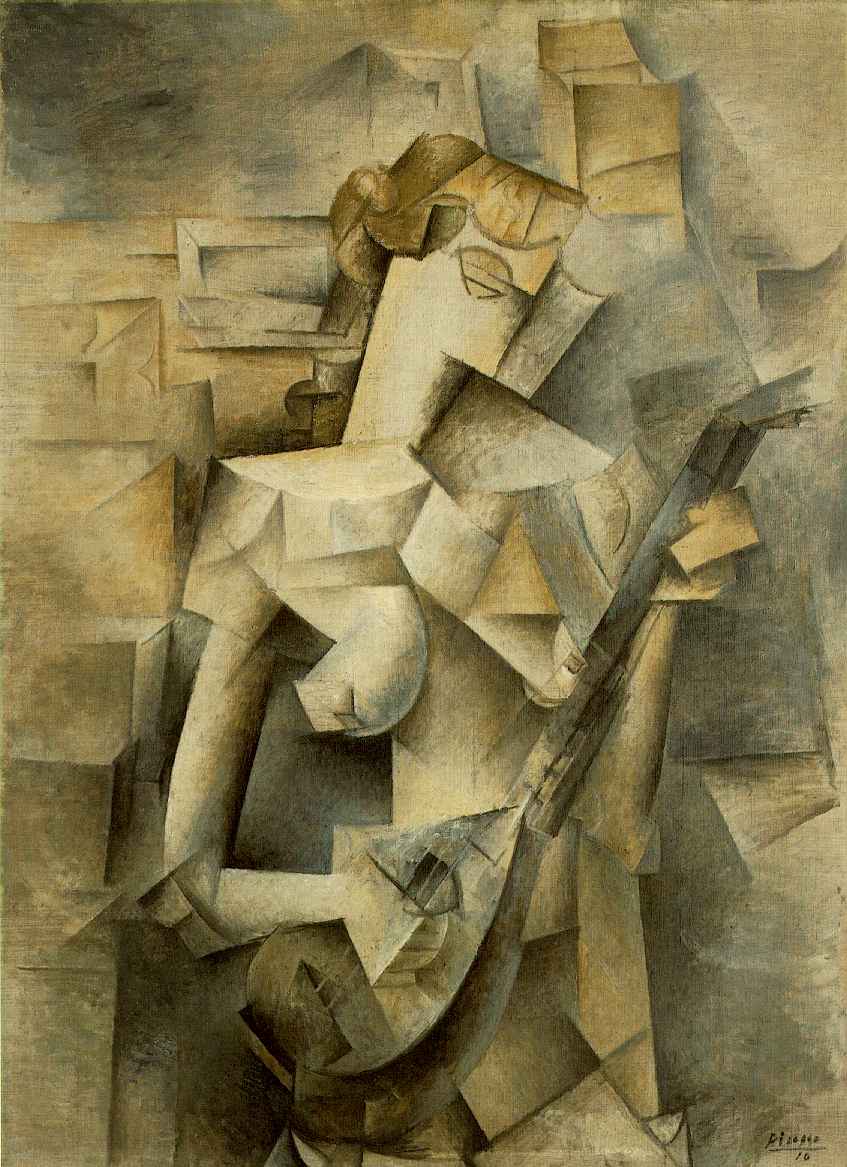
Posted In : Art Period
June 6, 2010
Fauvism (1905-1907) is derived from the French word “fauves” meaning “wild beasts.” It was an art movement that was incredibly dramatic and that was dominated by bright colors. A break from tradition and the patronage system occurred during this time period called the “vertigo years“ (1900-1914). There were more middle class people.
The father of this movement is Matisse (1864-1954) and most paintings produced during this movement were flat and composed of large splotches of vivid colors.
Derain’s “The Turning Road”
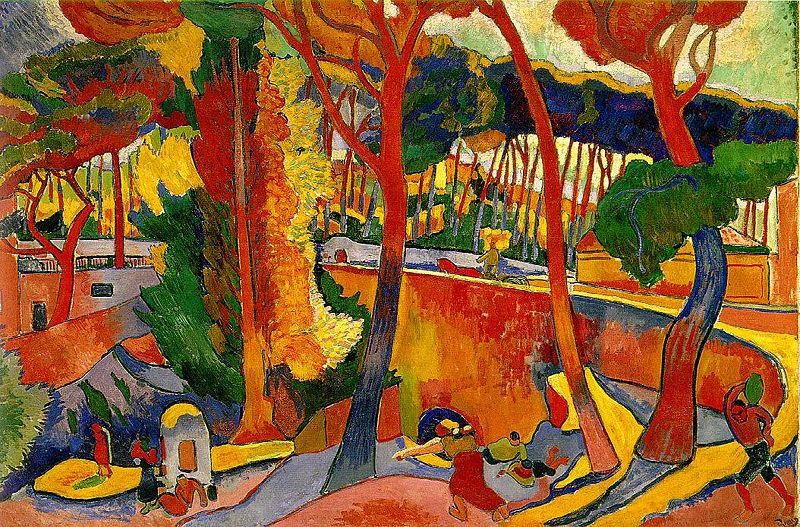
Posted In : Art Period
June 6, 2010
Post Impressionism (1886-1905) continued with the Impressionist use of light and color but was more individualistic. Artists used similar methods but the art isn’t as unified as impressionist art. Pointillism, for example, was post impressionism.
Van Gogh’s “Starry Night”
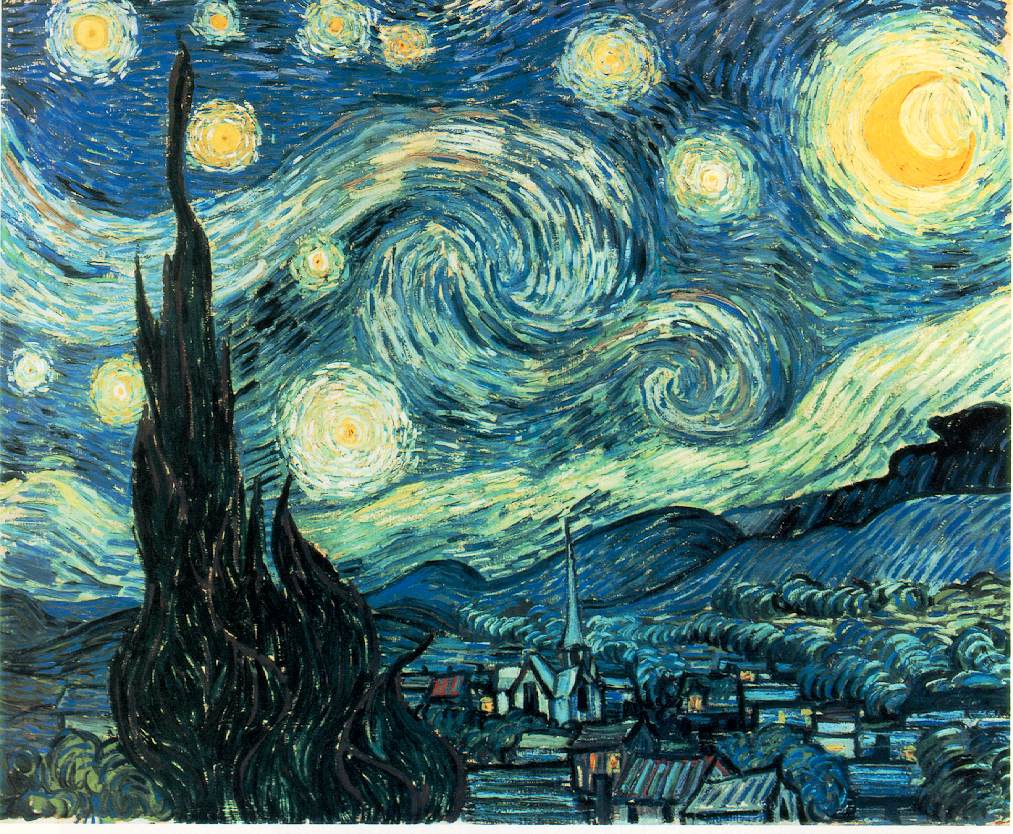
Posted by Succulent Ambush. Posted In : Art Period
June 6, 2010
Impressionism (c 1865-1880) was incredibly different than realism. It used color and light in new ways. Artists used color very often not found in the scene they were painting to show light. The colors were often divided. Plein air painting (painting outside) was big. The brushstrokes were impressive, often evident and large.
Degas’ “Waiting”
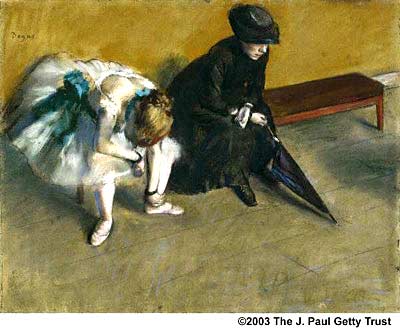
Posted In : Art Period
June 4, 2010
Realism (c 1860-1880) was a return to Enlightenment thinking and humanism to some extent. It was disillusioned with counter enlightenment movements. They wanted historical accuracy as with Neoclassicism. The artists of the realist movement paid attention to detail and made realistic depictions of people. They sometimes dealt with politics and made social commentaries.
Eakins’ “The Gross Clinic”
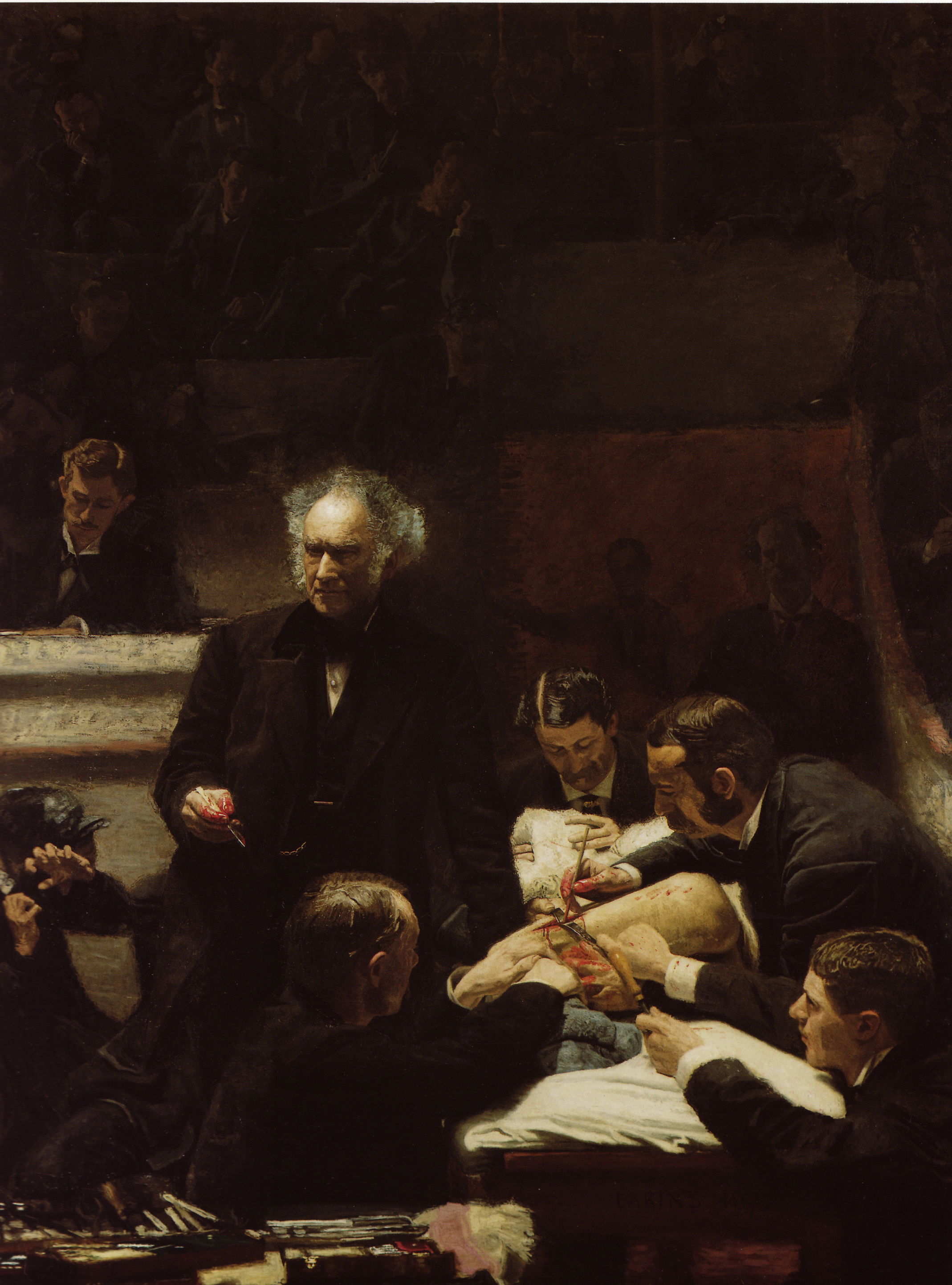
Posted In : Art Period
June 4, 2010
Romanticism (1830-1848) was Counter Enlightenment and arose after the French Revolution. It was highly emotional an often idealized things. It was anti reason and logic and pro faith and emotion. The Romantic hero (Napoleon, for example) was big. Industry was rising, causing pollution and disillusionment. Revolution, nationalism, and individualism were big themes as was escape from the modern world. The natural world, the past, exotic places, and the imagination were all places to escape to.
Eugene Delacroix’s “Liberty Leading the People”

Posted In : Art Period
June 4, 2010
Neoclassicism (c. 1750-1830) was a reaction against the frivolous Rococo style and a result of archaeological discoveries that aroused interest in Greek and Roman antiquity. Historical dress was depicted as accurately as possible and discoveries of buried cities like Pompeii added to accuracy of other things shown in paintings. The Enlightenment was in full bloom when this movement began. Early neoclassical works were similar to Rococo excepting content.
During the movement, around the time the French Revolution began, more allegorical and narrative paintings arose and many artists and their work began to advocate principles of the Roman Republic like virtue, simplicity and heroism. This movement dealt with revived classical art- content, themes, and aesthetic principles.
Jacques-Louis David's "The Death Of Marat"

Posted In : Art Period
June 4, 2010
Rococo (c. 1700-1750) bridged Baroque and Romanticism (1830-1848) and had characteristics of both. It used lighter colors that Baroque art. It was dominated by the French and incredibly sensual, more obviously so than Baroque. “Ennui” or boredom was big during the time. There was a lot of attention to detail at the time and vivid colors. Rococo touched interior design and architecture during this time.
Fragonard's "The Swing"

Posted In : Art Period
June 3, 2010
Dutch Golden Age Painting or 17th Century Genre painting shares characteristics with Baroque such as realism and chiaroscuro, but lacked the sheer spectacle and idealization common in the Baroque movement. It was incredibly detailed for the most part. There was more secular paintings than in Baroque, religious art only a very small part of this movement. Mostly it was images of common everyday images. Historical paintings, portraits, still lifes, landscapes, and common scenes of the time were painted mostly. A huge amount of paintings were produced during this time.
Source: http://en.wikipedia.org/wiki/Dutch_Golden_Age_painting
La Tour's "Cheater with an Ace of Diamonds"
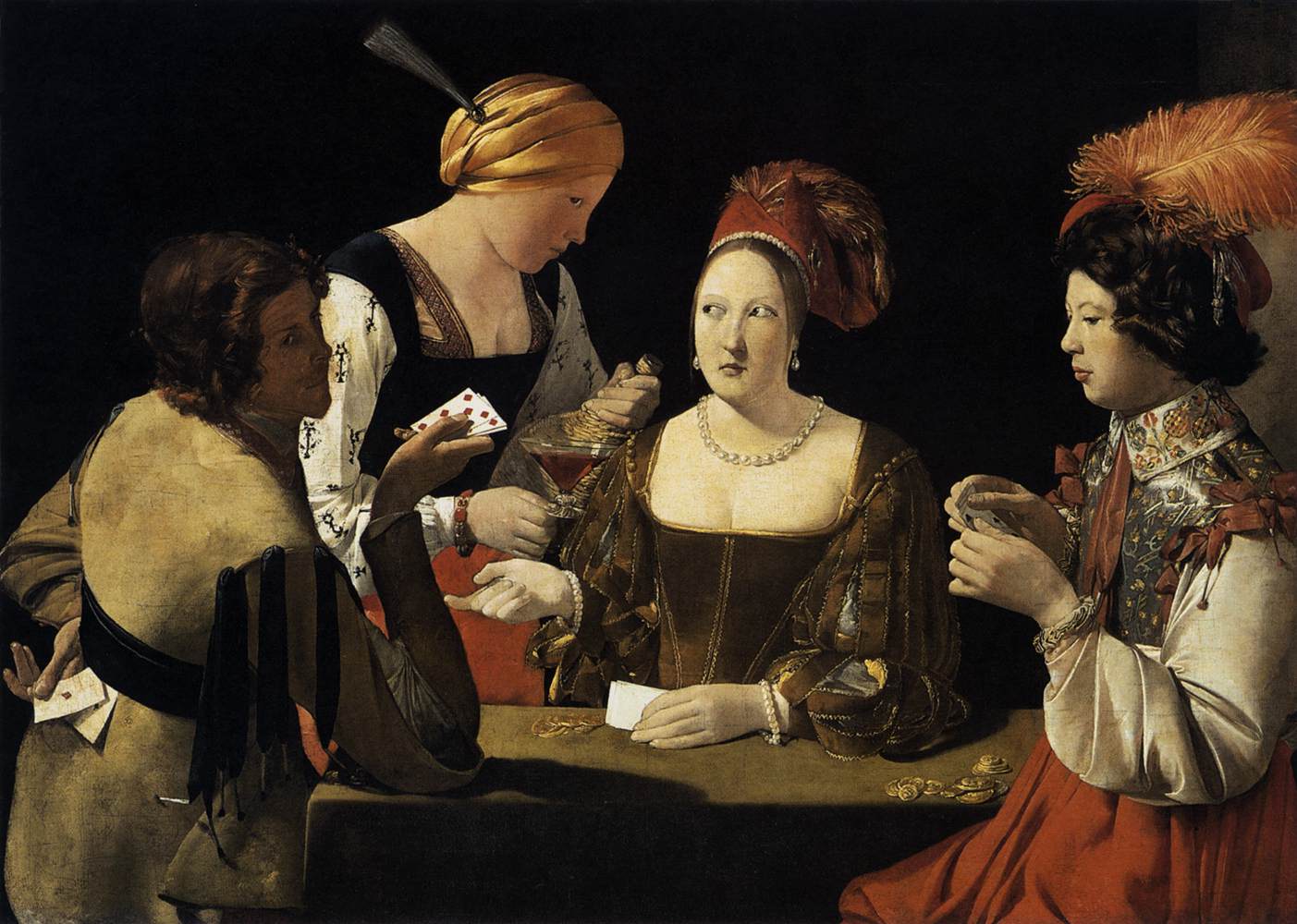
Posted In : Art Period
June 3, 2010
Baroque (1550-1700) means “odd” or “irregular.” It was similar to mature mannerism. There were secular and religious themes. The paintings and sculptures were realistic but were paired with passion, symbolism and sexuality. It offers more spectacle than ever before and has been described as self-confident.
"Judith beheading Holofernes" by Carvaggio
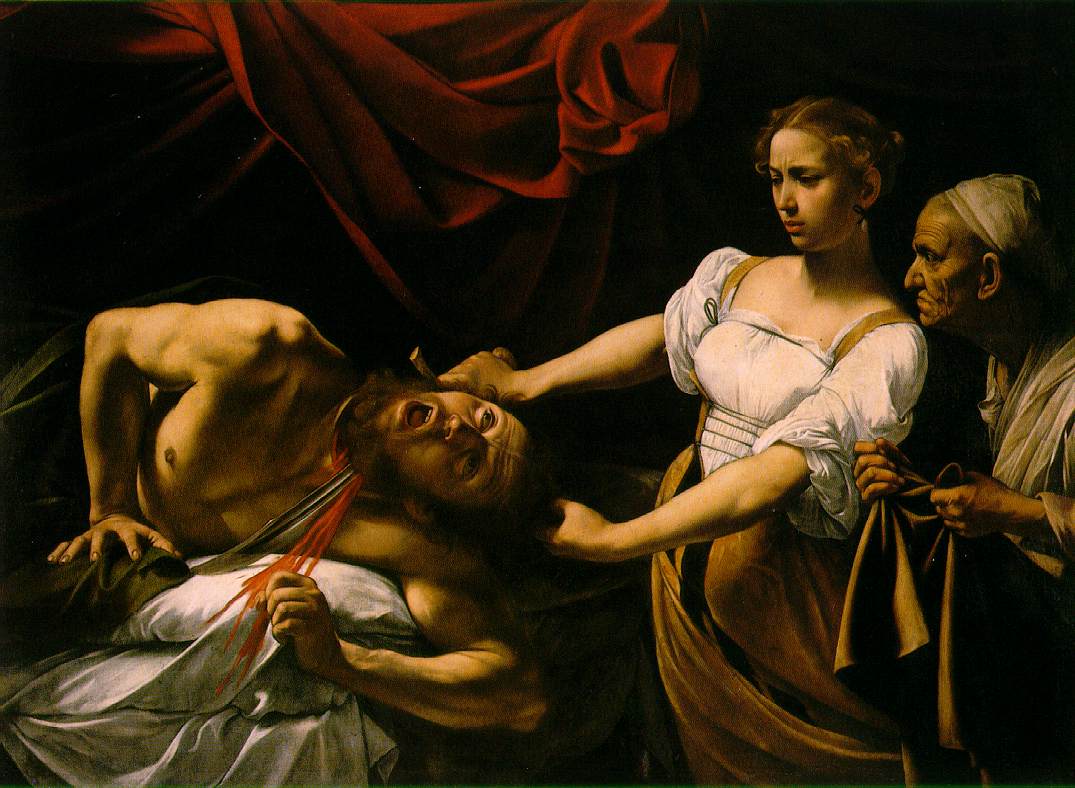
Posted In : Art Period
June 3, 2010
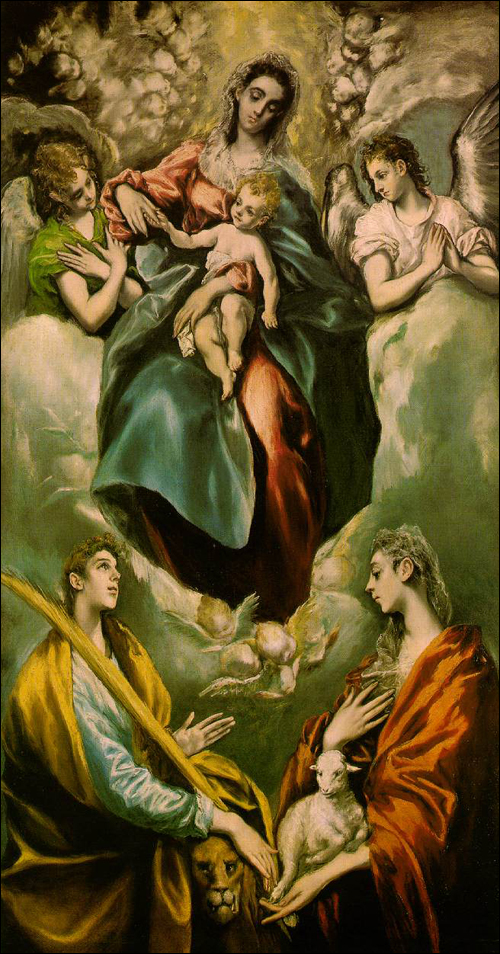
“Madonna and Child with St. Martina and St. Agnes” by El Greco
Mannerism (c 1500-1550) was the painting and sculpting in the Rennaisance manner, but they were not the same. According to Honour and Fleming (2005), mannerism has been characterized “as an expression of the spiritual crises of the time or as a sophisticated art created solely for art’s sake.” The artists dealt with people in various poses in experimental ways. The neck and torso were often elongated.
Foreshortening and chiaroscuro were once again used in this movement.
Posted In : Art Period
June 3, 2010
The Renaissance (c. 1300-1550) was a cultural movement, a “rebirth.” Humanism, rediscovery of the value of humanity, was big and contributed to the rise of scientific naturalism/realism in art. Classicism, the Greek and Roman styles of art, was reawakened. Classicism preached solemnity, order and balance. Style and balance ruled the architecture influenced by classicism. Chiaroscuro, dramatic light and shade, began to be used.
Men were trying to make sense of the world during the Renaissance. The influence of Classicism showed this and what they wanted the world to be.
Neoplatonism, new Plato’s philosophy, and themes important in his time were reawakened (mythology and Paganism).
Florence was the most important Renaissance city.
The High Rennaisance (c 1450) mostly perfected previous innovations. Foreshortening, expressions, more use of color and light, better anatomy than ever before.
Boticelli "La Primavera"
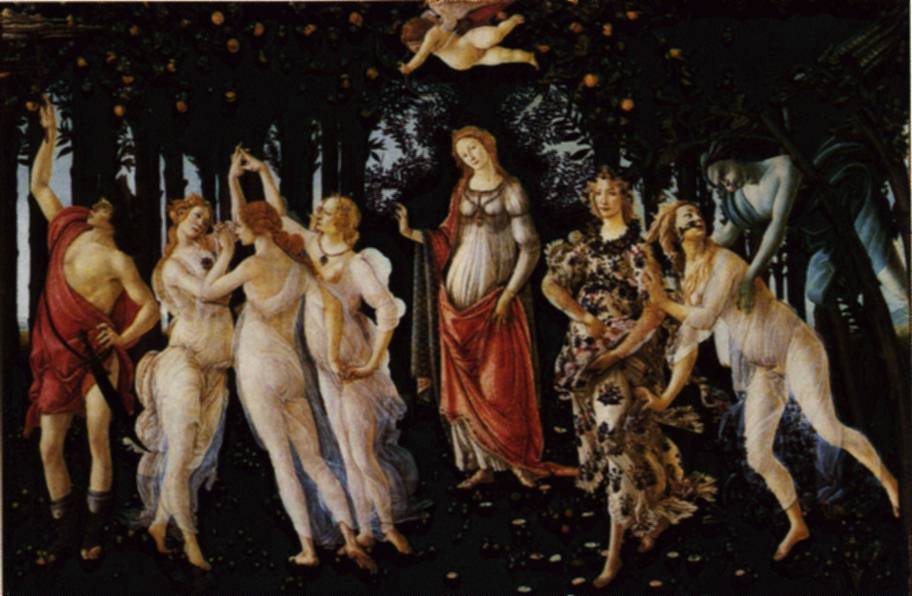
Posted In : Art Period
June 3, 2010
Medieval Art (circa 900-1300 {1} or 300-1400 {2}) was highly iconic and often religious. Artists needed patrons and the most important was the Roman Catholic Church. The art produced during this time wasn’t necessarily realistic. This was caused, at least partly, by the second commandment in the bible: “Thou shalt not make graven images.”
Most people were illiterate so they learned through visual instruction. Art was heavy on symbolism and color coding*. Size was important; the divine, such as Jesus and God, were larger than life.
There were rarely names on pieces of art because signing the name was considered vain and prideful. Illuminated manuscripts were big during this era and the most common item found in museums, in my experience, from the middle ages as so much art was lost.
Gothic architecture developed in the middle of the 1100’s.
*Gold=Divine
Mary=royal blue
Jesus was often shown in red and blue
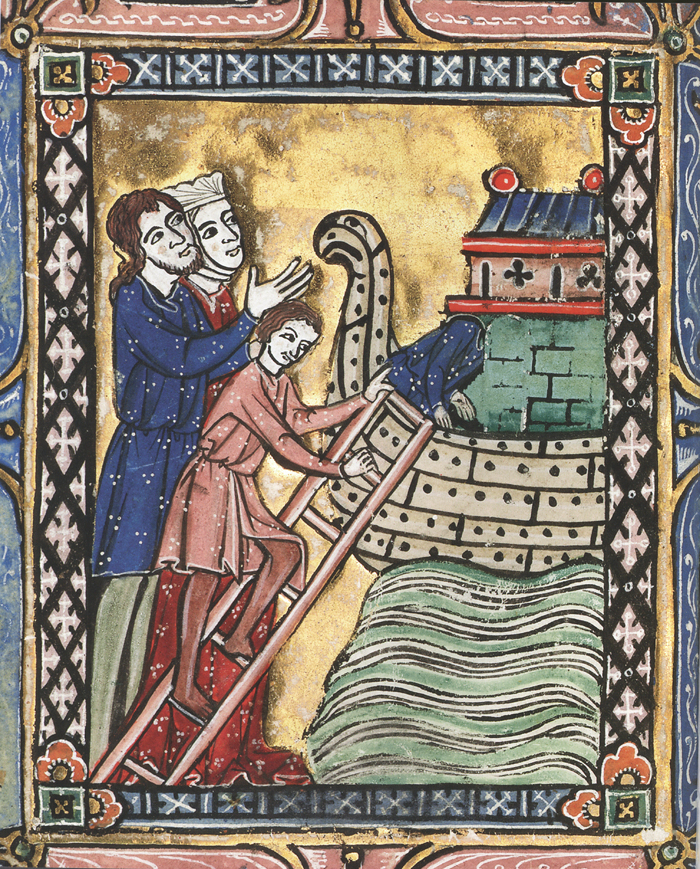
Posted In : Art Period
|
Art Periods:
Medieval Art: 900-1300
Rennaissance: 1300-1550
Mannerism:: 1500-1550
Baroque: 1550-1700
Dutch Golden Age Painting: 1600’s
Rococo: 1700-1750
Neoclassicism: 1750-1830
Romanticism: 1830-1848
Realism: 1860-1880
Impressionism: 1865-1880
Post Impressionism: 1886-1905
Fauvism: 1905-1907
Cubism: 1908-1914
Abstraction: 1908-1920’s
Dadaism: 1916-1922
Surrealism: 1924-1930’s
Abstract Expresionism: c. 1945-1965
Pop Art: 1960's
Sources (unless otherwise stated):
{1} High school humanities teacher: Philip Koger
{2} arthistory.net
Wikipedia was used to double check information and expand in some cases. |





















